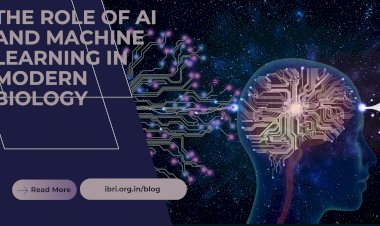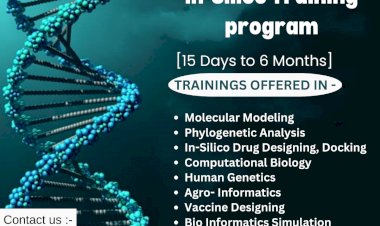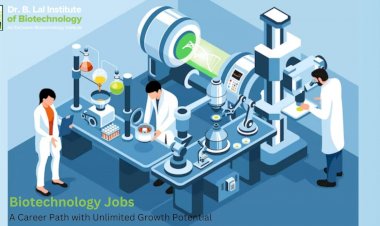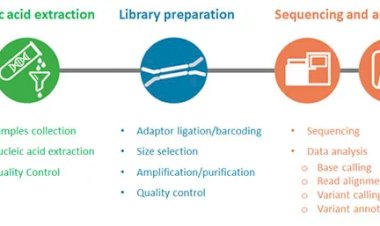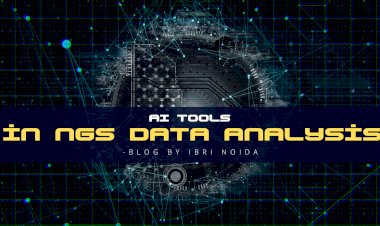Agro-Informatics: Empowering Agriculture Through Data and Technology
This blog explores the transformative field of agro-informatics, highlighting how data-driven technologies like GIS, remote sensing, and predictive analytics are revolutionizing modern agriculture. It outlines the core components, benefits, and challenges of integrating information technology with farming practices to improve crop yields, optimize resources, and build climate resilience. A special focus is given to the Indian Biological Sciences and Research Institute (IBRI) in Noida, which offers dry lab hands-on training in agro-informatics, equipping students and professionals with practical skills in agricultural data science. The blog emphasizes the importance of collaboration and capacity-building to fully harness the potential of agro-informatics for a sustainable agricultural future.

Introduction
Agriculture has always been the backbone of civilizations, providing food, raw materials, and livelihoods for billions. As global populations rise and climate change reshapes weather patterns, the pressure on agriculture to be more productive and sustainable has intensified. This is where agro-informatics—the fusion of agriculture and information technology—steps in.
Agro-informatics, also known as agricultural informatics or agri-informatics, leverages data science, digital tools, and artificial intelligence to enhance agricultural practices, boost yields, and make farming more efficient and resilient.
What is Agro-Informatics?
Agro-informatics is the interdisciplinary field that applies data analytics, remote sensing, geographic information systems (GIS), machine learning, and information communication technologies (ICT) to solve agricultural challenges. It transforms raw agricultural data into actionable insights for farmers, policymakers, agronomists, and agribusinesses.
Core Components of Agro-Informatics
- Data Collection and Management
Data in agro-informatics comes from multiple sources—satellites, sensors in the field (IoT), drones, weather stations, mobile apps, and farm machinery. Managing this data involves organizing, storing, and ensuring its accuracy for decision-making. - GIS and Remote Sensing
Tools like GIS and satellite imagery help in monitoring crop health, soil moisture, land usage, and pest outbreaks across vast areas with high precision. - Predictive Analytics
Machine learning models can predict weather patterns, disease outbreaks, and crop yields, allowing farmers to plan better and reduce risks. - Decision Support Systems (DSS)
These systems provide farmers with real-time advice on irrigation schedules, fertilizer use, planting dates, and market prices, often via mobile apps or SMS. - Digital Agriculture Platforms
Integrated platforms offer end-to-end farm management—tracking input use, labor, harvest, and post-harvest logistics—making agriculture more data-driven and efficient.
Benefits of Agro-Informatics
- Improved Crop Yields: Data helps identify optimal planting conditions, crop varieties, and interventions.
- Resource Optimization: Precise application of water, fertilizers, and pesticides reduces waste and environmental impact.
- Climate Resilience: Real-time weather forecasting and climate modeling help farmers adapt to changing conditions.
- Market Access: Digital platforms connect farmers directly to markets, ensuring fair prices and reducing dependency on middlemen.
- Policy and Research Support: Government agencies and researchers use agricultural data to craft better policies and innovate sustainable practices.
Challenges and Limitations
While agro-informatics holds great promise, it also faces challenges:
- Digital Divide: Many smallholder farmers lack internet access, digital literacy, or smartphones.
- Data Privacy: Issues around who owns and controls farm data are still being debated.
- Interoperability: Integrating data from various sources and formats remains complex.
- Cost and Infrastructure: High initial investment and lack of rural infrastructure can hinder adoption.
The Road Ahead
To fully realize the potential of agro-informatics, collaboration is key. Governments, private tech firms, agricultural universities, and farmer cooperatives must work together to:
- Build rural digital infrastructure.
- Provide affordable, user-friendly tech solutions.
- Train farmers in digital literacy.
- Promote open data standards and ethical data use.
IBRI Noida: Building Skills in Agro-Informatics
One notable institution contributing to the field is the Indian Biological Sciences and Research Institute (IBRI) in Noida. IBRI offers specialized dry lab hands-on training programs in agro-informatics, focusing on geospatial analysis, crop modeling, and agricultural data science. These project-based trainings—typically lasting from one to six months—equip students and professionals with skills in GIS tools, remote sensing, statistical modeling (using R/Python), and decision support systems like DSSAT. Designed for students from life science backgrounds, the program provides real-world exposure through one-on-one mentoring and project work, culminating in a certificate. IBRI's initiative supports the development of a skilled workforce ready to tackle modern agricultural challenges using data-driven approaches.
Conclusion
Agro-informatics is not just a technological trend; it's a paradigm shift in how we approach farming. By turning fields into data-rich environments and farmers into informed decision-makers, agro-informatics is laying the groundwork for a more sustainable, productive, and equitable agricultural future. As we look to feed a growing world, harnessing the power of data in agriculture isn't just smart—it's essential.










